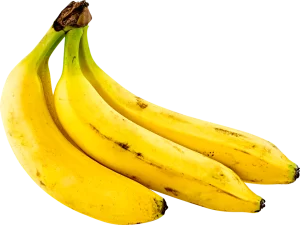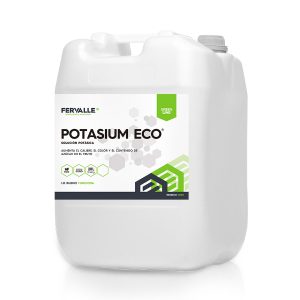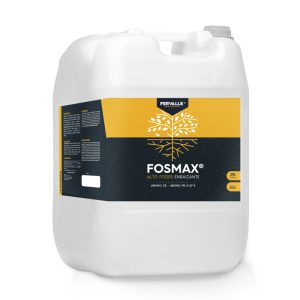CULTIVATION STRATEGY FOR

Banana cultivation.
The banana stands out for being the most cultivated tropical fruit in the world. In fact, it is considered one of the four most important fruits worldwide, behind citrus, grapes and apples.
It is interesting to note that the banana tree is actually the largest herbaceous perennial plant in the world, despite being known as a tree.
-

MAORVALLE®
Powerful Processed Organic Matter -

POTASIUM®ECO
Ecological Potassium -

FOSMAX®
fosmax, Powerful Rescuer, Rooting
» Banana plantation
·When are banana trees planted?
The best time to plant banana trees is in the rainy months, that is, the winter months or early spring.
·How are banana trees planted?
The banana reproduces through shoots, that is, shoots that are born from the main rhizome and that are capable of giving rise to a new plant that is genetically the same as the original.
This is the most common and simple way to reproduce banana trees.
Edaphoclimatic requirements
·Soil
Although banana trees adapt well to a wide variety of soils, they prefer sandy loam, clay loam or silt loam, rich in organic matter and potassium, deep and well drained, with optimum pH ranging between 5’5 and 6’6. In addition, they are not tolerant to salinity.
·Climate
The optimum climate for banana trees is the tropical climate or hot and humid climate. They need an average temperature of about 27oC, with regular and intense rains.
» Care required by banana trees
·Soil preparation for banana cultivation
The preparation of the land for planting bananas consists of:
- Plowing work
- Minimal drag
- Application of organic matter
- Elimination and control of weeds
·Banana irrigation
Bananas require regular, slow, deep watering every 2-3 days. The ideal is the drip irrigation system.
It is a crop that is very sensitive to drought, but also extremely susceptible to damage caused by floods and continuously wet and poorly drained soils.
- Banana pruning
Pruning banana trees after harvest is very important. The stems only produce fruit once, so after harvesting they are cut off. In this way, new fruits will grow back.
- Desuck
Desuckering is the elimination of secondary children, choosing the strongest to continue production. When cutting the children, the growth bud must be eliminated to avoid regrowth.
By desuckering you get:
- An adequate density per unit area
- Uniform plant spacing
- Number of children per regulated production unit
- Selection of the best sons
- Increased production and distribution of the same throughout the year
- Leafless
Leaf stripping is the removal of dry or folded leaves at the base of the bunches. With this, a better exposure to light, air and heat is achieved.
Between 8 and 9 leaves per plant should be maintained and it is advisable to strip the leaves every 15-21 days.
- Propping
Propping is a technique that is used on plants with clusters in order to prevent them from falling and losing the fruit. Materials such as bamboo cane or wild cane are used, which are placed in the form of scissors with the vertex upwards, without touching the bunch.
- Sheathed
To protect the fruitagainst insects, birds, chemical products, etc. it is covered with perforated polyethylene covers.
- Desman
Desman is a practice that consists of manually removing false or incomplete hands from the bunches from the bottom up. In this way, the development of the remaining ones is enhanced.
» Nutrients needed for banana cultivation
The main nutrients required by a banana crop are phosphorus, nitrogen and potassium.
- Phosphorus: It’s very important in the early stages of growth.
- Nitrogen: It stimulates leaf and root development, essential in the first stage of development.
- Potassium: It’s one of the most important elements in the fruiting of the crop.
Fertiliser for bananas
- What fertilisers do bananas need for their cultivation?
As we have already seen in the previous section, the main components that banana fertiliser should contain are phosphorus, nitrogen and potassium.
For the organic cultivation of bananas, organic fertilisers such as manure, compost or earthworm hummus, as well as those formulated with algae, minerals or other natural elements, shall be applied.
Some of Fervalle’s recommended fertilisers for banana cultivation are Maorvalle, Potasium Plus and Fosmax.
Maorvalle fertiliser is formulated with natural organic components (fulvic acids, organic nitrogen, potassium and calcium) from various agri-food industries. Its main benefits are:
- It improves root system and soil structure
- It increases nutrient bioavailability
- It supports different beneficial populations in the soil and root system
Potassium Plus is a fertilizer that provides potassium to plants. Its main effects are:
- It enhances the synthesis of sugars
- It enhances the color of the fruits
- It activates the synthesis of proteins involved in photosynthesis
- It participates in the maintenance of the turgidity of plant tissues
- It increases the absorption of nutrients
Fosmax is an important source of highly assimilable organic phosphorus. Its main advantages are:
- It provides nutrients such as phosphorus, potassium and calcium, among others.
- It confers high rooting power
- It helps flowering
- It improves fruit set and fruit ripening
- It facilitates the absorption of nutrients present in the soil
» Banana harvesting
The banana plant takes about 9 months to grow and it is then when it starts to produce the first fruits, which are ready to be cut when they have reached their maximum development and start to turn yellow.
Crops can be harvested all year round, more or less abundant depending on the season. After harvesting, the trees are cut at the base and the scions are kept at the base. In this way, they will bear fruit again after four months.




